Of Locks and Lochs: The Caledonian Canal
Raymond Heer, captain of M/Y MoonShadow, charts its journey through the Caledonian Canal…
After Antarctica, Patagonia, Galapagos, Panama and a summer cruise in New England, we found ourselves in bonny Scotland, preparing for the next adventure. As 2022 was the 200th anniversary of the Caledonian Canal, we thought that it would be appropriate to raise a wee dram while passing through this stunning piece of Scottish countryside known as The Great Glen.
We believe MoonShadow [a 43-metre Feadship] is the largest yacht to ever transit the canal in her 200 years of existence, so it felt quite appropriate to be doing this on such an auspicious occasion.
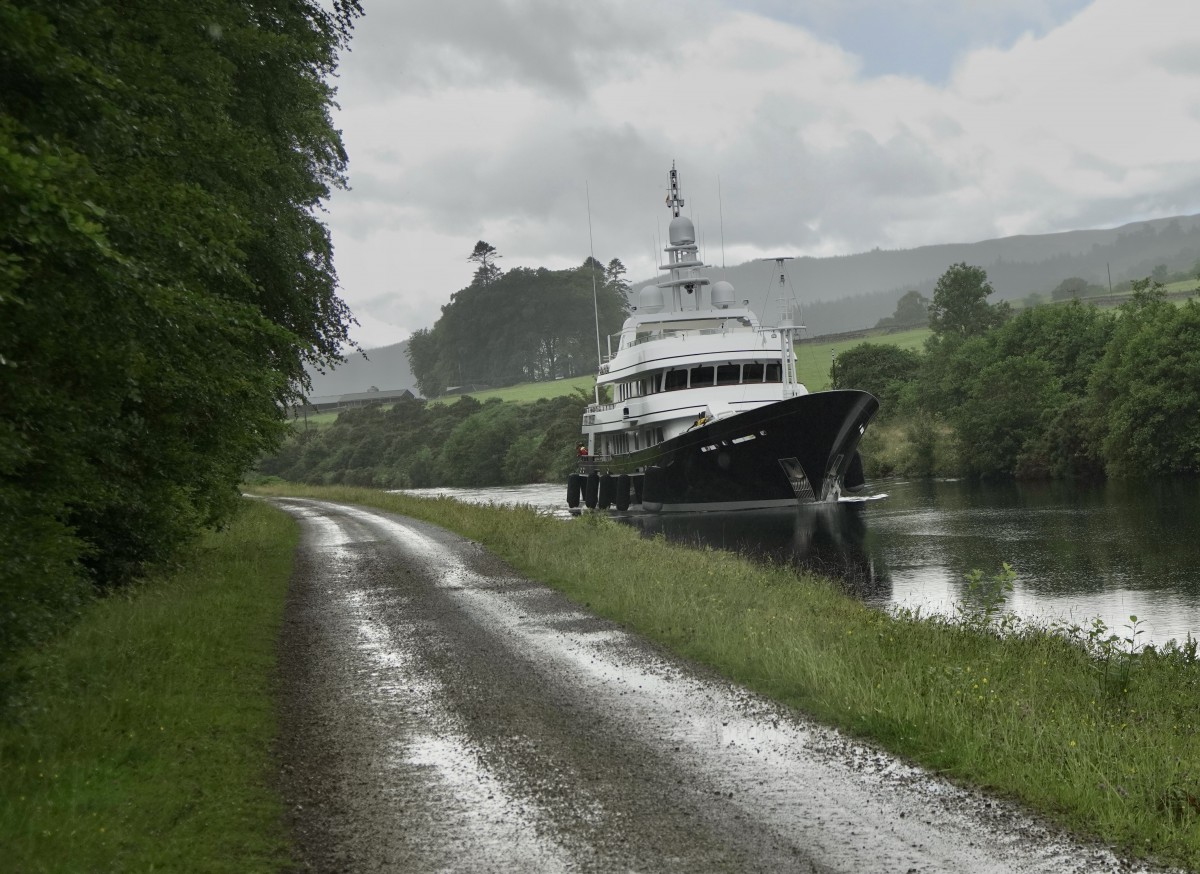 The Great Glen.
The Great Glen.
This story, however, does not begin here. It began in 1793 when local man William Fraser proposed his scheme for a canal which would cut through The Great Glen, in the northern end of Scotland, as an alternative to navigating the dangerous Pentland Firth and the aptly named Cape Wrath in the north of Scotland.
Thomas Telford, a brilliant Scottish engineer at the time, designed and constructed the canal to pass through Loch Dochfour, Loch Ness, Loch Oich and Loch Lochy. It bisected the country from Fort William in the south, heading uphill to Laggan and then downhill again to finally flow back into the ocean at Inverness.
Designed to accommodate Royal Navy 32-gun frigates, the canal was mostly dug by subsistence farmers in the area. These farmers were paid on a piecemeal basis. They had no skills but were a strong people and willing to learn. Stone masons would carve a unique symbol into each stone they laid. Later the ‘accountants’ could walk through the locks and count the symbols on the stones in order to prepare payroll.
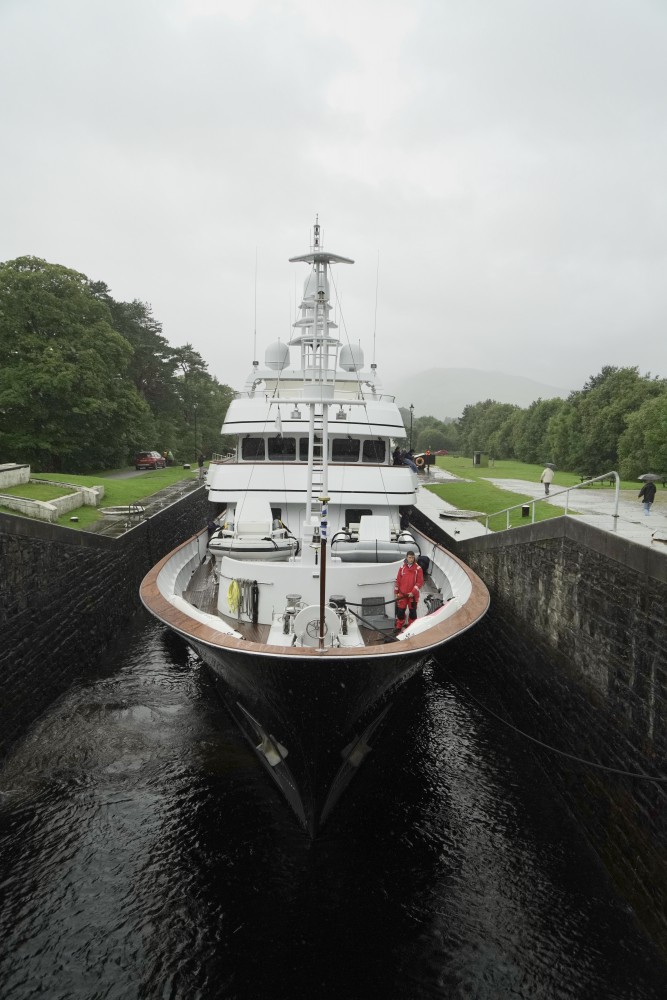
The canal finally opened in 1822, having taken an extra 12 years to complete and over-budget. The blood, sweat, tears and a substantial amount of genius was somewhat misguided, however; by the time the canal was completed, the Navy had no use for it any more. Ship design had changed and larger iron-hulled ships were now being built in this new era of steam. Napoleon had also met his Waterloo in 1815. It was a case of bad timing all around.
To add insult to injury, the canal was a commercial failure too, but Queen Victoria changed that by taking a vacation along it in 1873. The publicity surrounding her trip resulted in an increase of visitors to the region and the canal. Suddenly the Caledonian Canal was back on the map as a great tourist destination. Today the canal is a Scheduled Ancient Monument and a maintenance and repair plan was activated in 1995.
Tree-lined waterways, ancient castles, spectacular lakes, quaint villages and beautiful genuinely welcoming people make this a ‘must-do’ cruise for anyone with a wandering spirit.
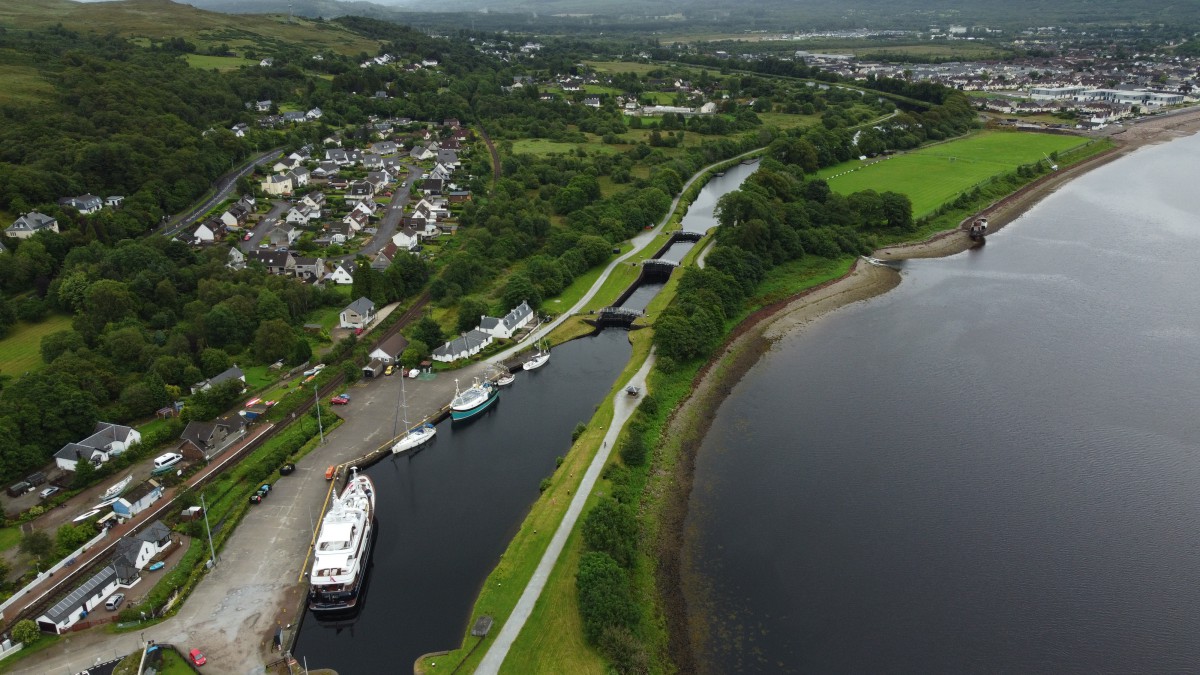
This is why, in 2022, we arrived with MoonShadow.
Preparing for the passage was simple, thanks to the helpful, friendly and accommodating team that keep the waterway working. They were real professionals and a pleasure to work with. The smallest lock is 45.7 metres long and 10.7 metres wide. However, once we confirmed that we would fit, nothing was going to stop us.
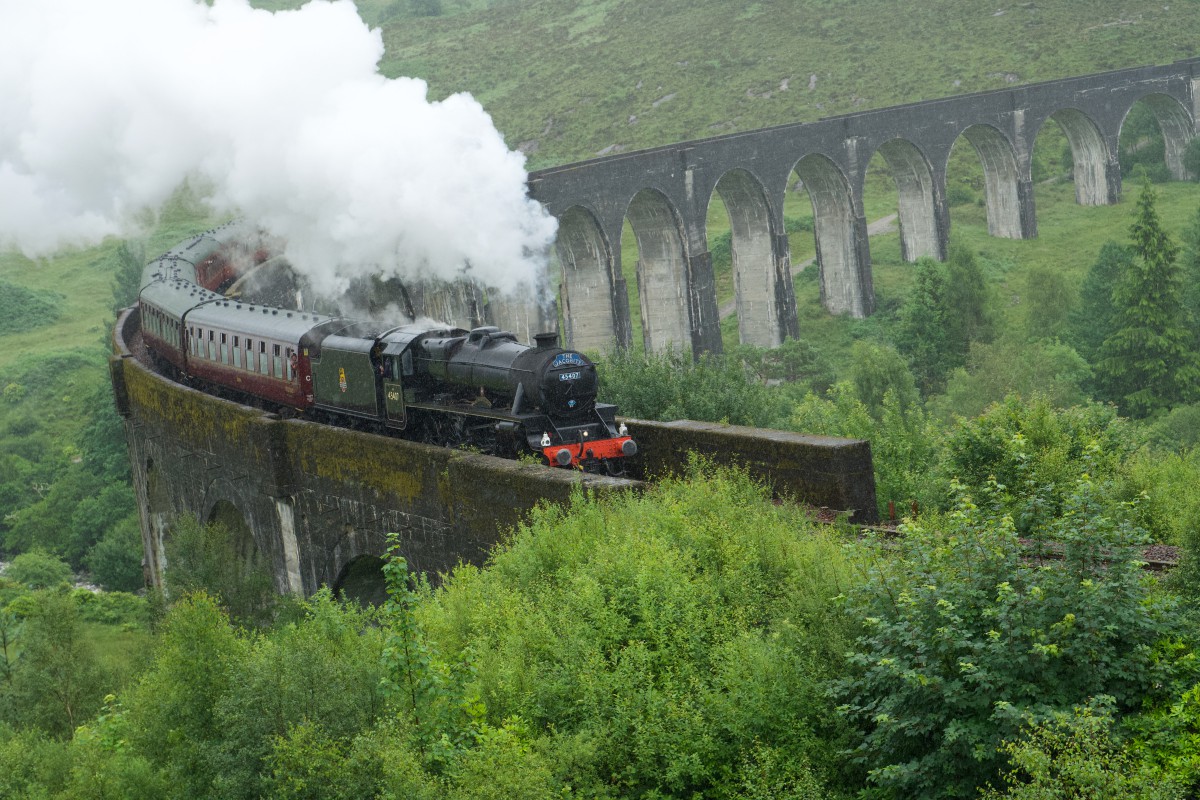 Harry Potter railway bridge.
Harry Potter railway bridge.
Our Scotland cruise started in Greenock and from there it didn’t take long to get into some superb cruising grounds in the Hebrides Islands. From there we journeyed to Fort William and after a short stop to see the ‘Harry Potter railway bridge’ we were in the first lock. All of this while Ben Nevis, the tallest mountain in Britain, was silently watching over us.
We had entered a 100-kilometre waterway with 29 locks, 10 bridges and 200 years of history. There was no turning back.
On the first day, we climbed the (in)famous Neptune’s Staircase. This is a flight of eight locks that raise the level of the canal by 64 feet (20 metres) in the space of 500 yards (460 metres). While in the locks, guests can step on and off the yacht, walk across the gates and along the banks to marvel at this 200-year-old engineering feat.
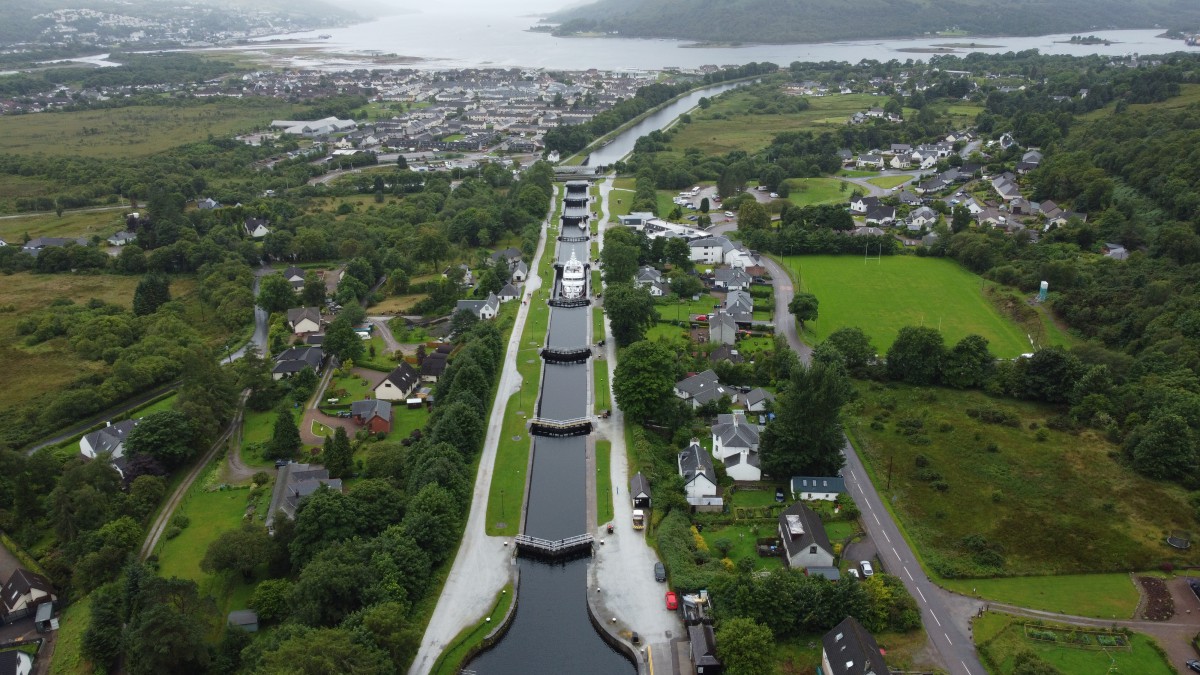
We meandered through the Great Glen, beautiful waterways and more locks. Pine forests lined the two lakes, Loch Lochy and Loch Oich. We were able to stop and cycle, paddle and walk, so never a dull moment along the way.
A bonus was to be able to tie alongside every night and be able to walk around the villages. My favourite was Fort Augustus. In this quaint town you can sit at a café, look down the locks and see Loch Ness in the distance.
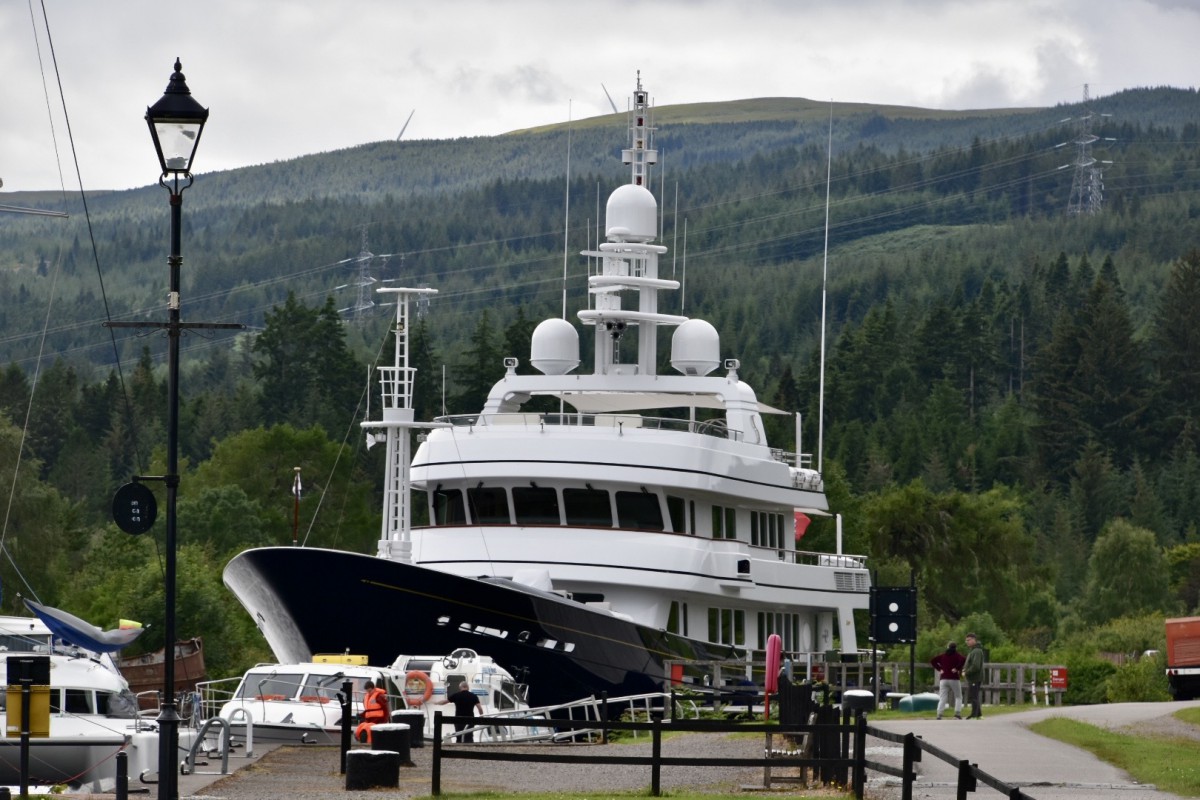
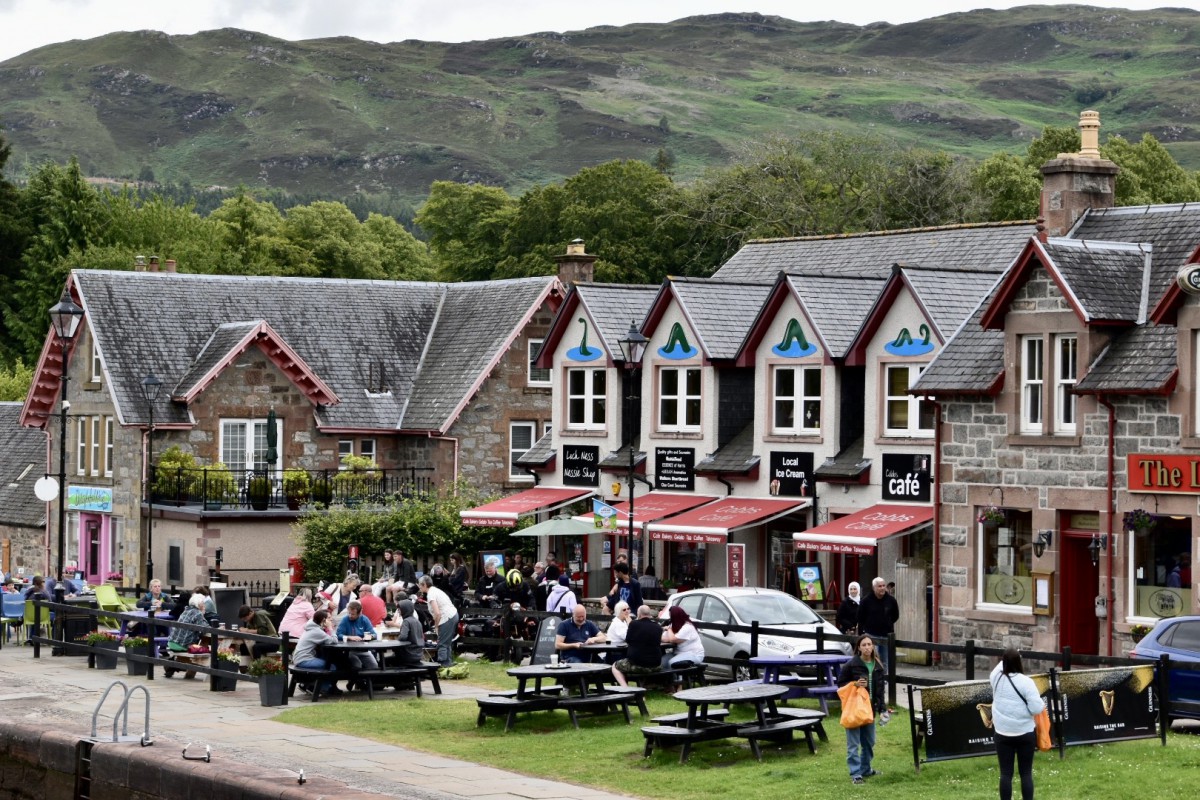
Loch Ness deserves a special mention. At over 400 feet deep and 22 miles long, it is the longest lake in Britain. It also contains more water than all of the lakes and reservoirs in England put together. It is no wonder the monster chose to call this home. Even though we spent every waking moment with all hands on deck, we never managed to sight the monster. At one point, though, we did feel an ominous rolling motion and we took this as clear proof that ‘Nessie’ is real and alive ...
A beautiful shore excursion in Loch Ness is the 13th-century Urquhart Castle. It is well worth visiting and the bay provides a serene anchorage if you are inclined to ‘hang out’ for a while. It was partially destroyed in 1692 by the Grant Clan, to prevent the Jacobites or anyone else from making it their home, but Urquhart Castle is still one of the most visited castles in Scotland.
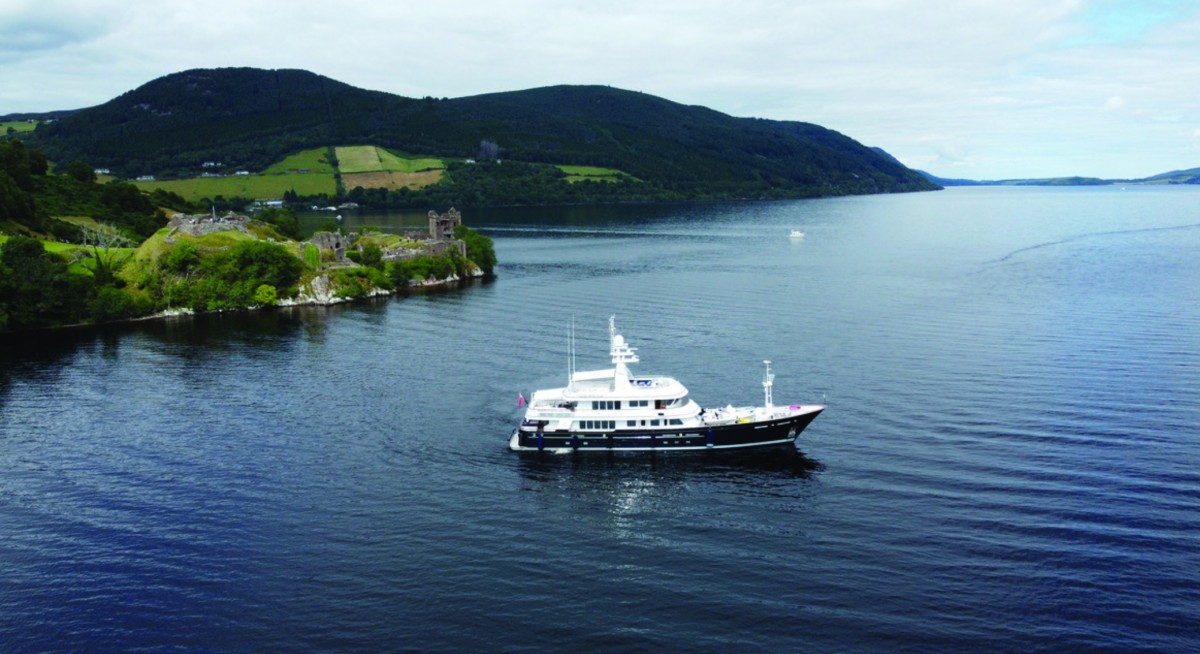 Loch Ness and Urquhart Castle.
Loch Ness and Urquhart Castle.
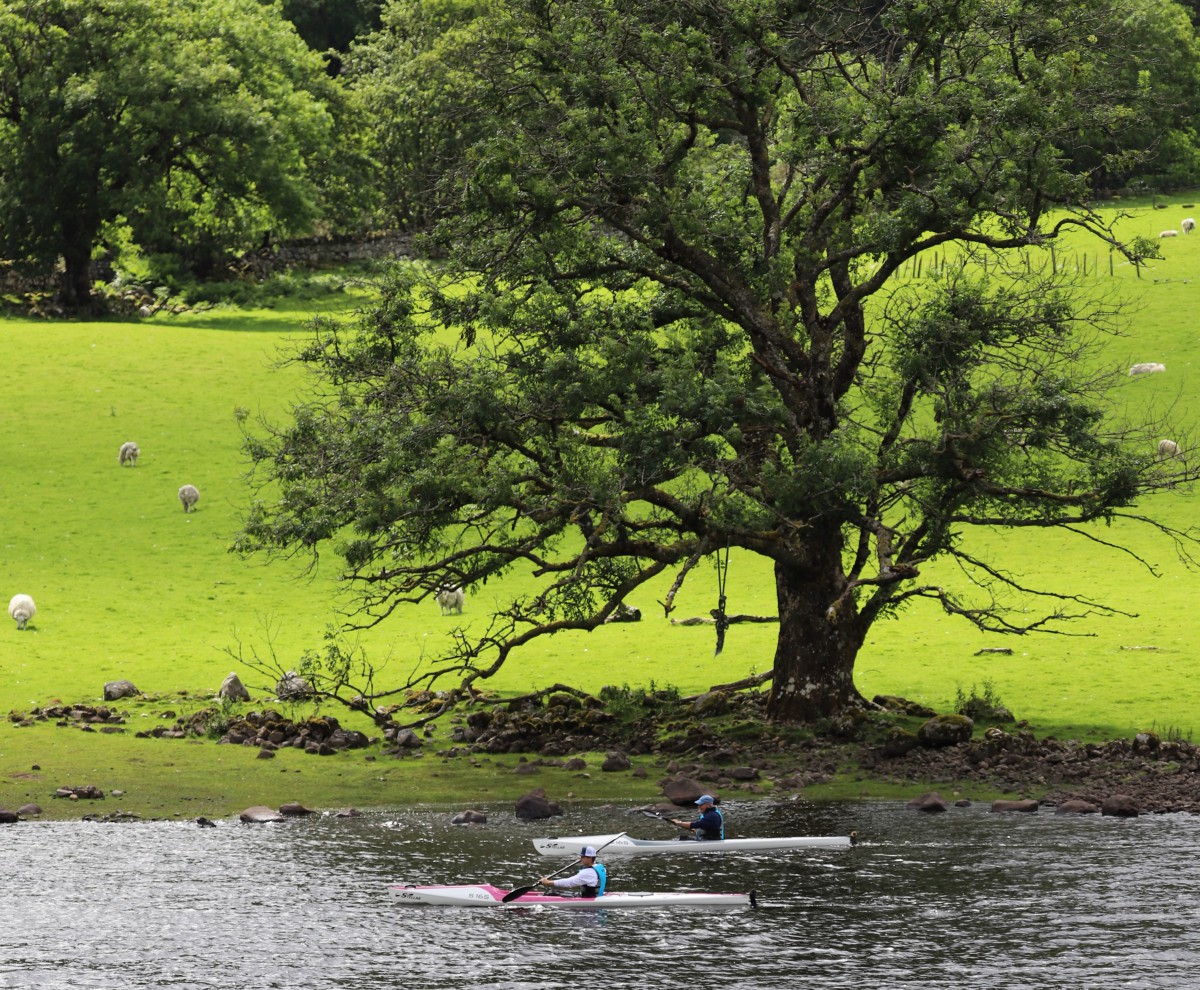 Kayaking on Loch Dochfour.
Kayaking on Loch Dochfour.
After leaving Urquhart, it is only a short sail to Loch Dochfour, where we managed to fit in some excellent kayaking while waiting for the locking process to allow us to continue to Inverness.
Scots are immensely proud of their heritage, so it would have been remiss not to end our cruise without kilts, bagpipes, dancing and haggis addressed in the correct manner. This is how we enjoyed our last evening, in the town of Inverness, before preparing for sea the following day.
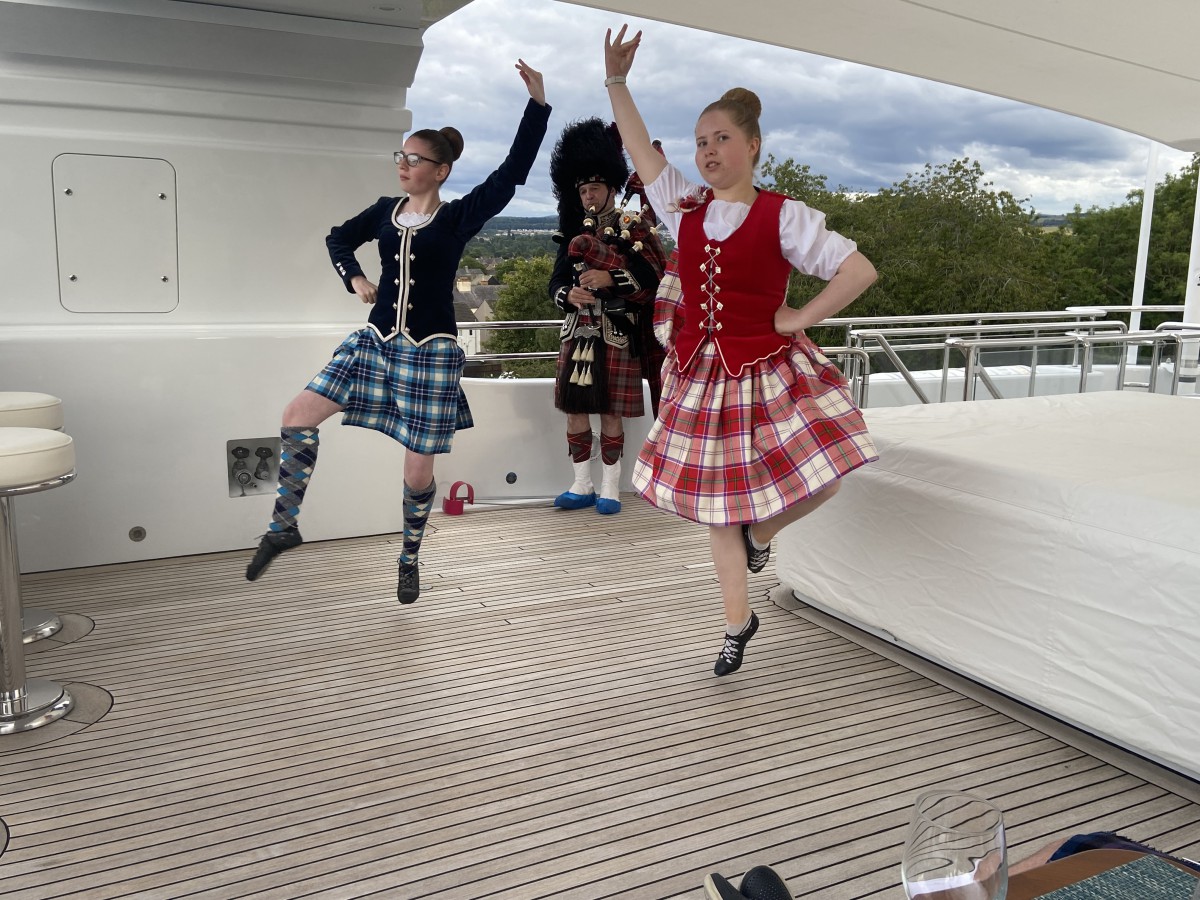 Kilts, bagpipes and dancing.
Kilts, bagpipes and dancing.
 Addressing the haggis.
Addressing the haggis.
After a memorable evening on board and a canal cruise second to none, we finally sailed through Clachnaharry sea lock, the last of the 29 locks, into the Beauly Firth and out to sea. We were on our final leg to complete our voyage from the South Shetland Islands to the ‘original’ Shetland Islands.
The Caledonian Canal was a special and memorable experience for all of us. Scotland is a remarkable destination, all the way from the Hebrides to the Shetlands. I recommend any yachtsman worth their salt places this on their cruising calendar as a must-go destination.
Images courtesy of the crew of MoonShadow.
NEW: Sign up for SuperyachtNewsweek!
Get the latest weekly news, in-depth reports, intelligence, and strategic insights, delivered directly from The Superyacht Group's editors and market analysts.
Stay at the forefront of the superyacht industry with SuperyachtNewsweek
Click here to become part of The Superyacht Group community, and join us in our mission to make this industry accessible to all, and prosperous for the long-term. We are offering access to the superyacht industry’s most comprehensive and longstanding archive of business-critical information, as well as a comprehensive, real-time superyacht fleet database, for just £10 per month, because we are One Industry with One Mission. Sign up here.
NEW: Sign up for
SuperyachtNewsweek!
Get the latest weekly news, in-depth reports, intelligence, and strategic insights, delivered directly from The Superyacht Group's editors and market analysts.
Stay at the forefront of the superyacht industry with SuperyachtNewsweek



